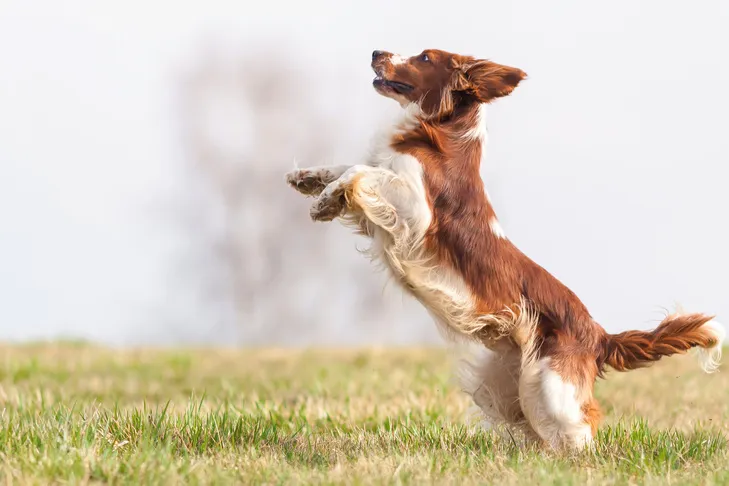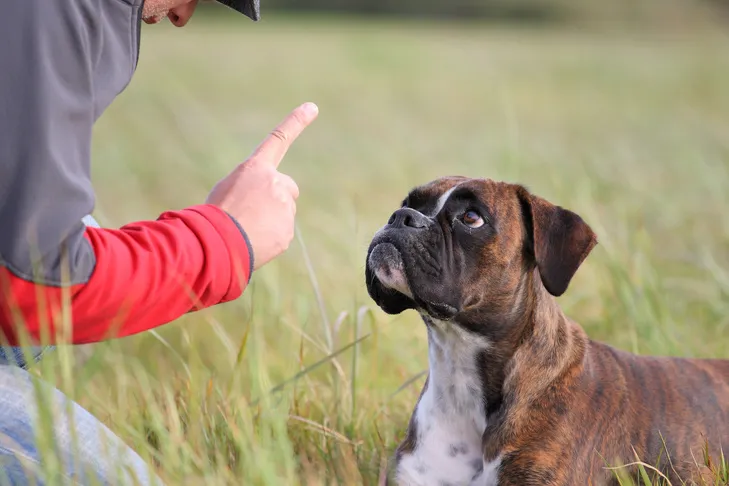Jumping up to greet people is a common and often frustrating dog behavior problem for many owners. While your furry friend likely means no harm and is simply trying to say “hello” face-to-face, it can lead to scratched legs, muddy clothes, or even accidental falls, especially for children and the elderly. Moreover, for many dogs, jumping is an effective strategy to gain your attention, making it a self-rewarding behavior. Understanding why your dog jumps is the first step in addressing this natural canine instinct.
The good news is that you can teach your dog more appropriate and polite ways to greet humans. The key is to teach an incompatible alternative behavior, such as keeping “four paws on the floor.” This approach is not only safer but also provides your pet with a clear guideline on how to welcome you home and earn the attention they crave. If you are struggling with keeping your dog calm and focused, learning how to get dog to come inside can be a foundational step in establishing better communication and control. The following 10 tips offer practical strategies to help your canine companion master proper greeting etiquette, ensuring they know exactly how to say “hi” in a polite manner.
1. Only Greet Your Dog When They Have Four Paws on the Floor
The most effective strategy for managing problematic behaviors is to teach your dog an alternative, incompatible action. Your dog will learn more quickly and easily if you instruct them on what to do, rather than simply what not to do. In the context of jumping, this means training your dog to keep all four paws on the floor. A dog cannot jump and stand simultaneously. You might also choose to teach them to sit or lie down for greetings. Whichever rule you establish, consistently provide attention and affection only when your dog adheres to it. Consistency is crucial; for instance, avoid allowing your dog to jump when you’re wearing casual clothes but not when you’re dressed up.
2. Give Attention As Soon As Your Dog’s Front Feet Hit the Floor
Dogs tend to repeat behaviors that result in desired outcomes. Therefore, as long as your dog is following your greeting rule, such as keeping their front feet on the floor, immediately offer praise and petting. Your dog’s primary motivation is your attention and approval, so ensure they receive this reward promptly whenever they exhibit the correct behavior, especially during the learning phase. Avoid delaying your greeting while you attend to tasks like removing your coat and shoes, as your dog might become impatient and resort to jumping to get your notice.
3. Remove Attention When Your Dog Jumps
Conversely, the only way to eliminate jumping is to cease reinforcing it. Never reward a behavior you wish to stop. If your dog jumps on you, quickly withdraw the attention they seek. This can be achieved by calmly turning your back or walking away, signaling to your dog that jumping has the opposite effect of what they intended. However, the moment your dog returns to having “four on the floor,” turn back and quietly offer praise and petting. This method helps your dog understand that their behavior acts as a switch, controlling whether or not they receive your attention.
 Welsh Springer Spaniel jumping up outdoors, captured in motion.
Welsh Springer Spaniel jumping up outdoors, captured in motion.
4. Set Up Your Dog for Success
While ignoring jumping and rewarding proper greetings is effective, it can be a trial-and-error process that might be frustrating for your dog. To expedite learning, set your dog up for success by making it easier for them to follow your greeting rule. If your rule is for them to sit, ask them to sit the moment you enter the door. If “four on the floor” is your preference, encourage them to remain standing. A highly effective method to prevent jumping is to scatter treats on the floor upon entering. Most dogs find free treats irresistible, and they cannot jump while simultaneously sniffing the ground for food. Be quick; if you provide the food before your dog even considers jumping, you can reward “four on the floor” with both attention and treats. Your dog will quickly grasp the greeting rule, allowing you to gradually phase out the food rewards. For dogs that also exhibit pulling behaviors, applying similar positive reinforcement and management techniques can be beneficial, as demonstrated in guides on how to train a dog to stop leash pulling.
5. Always Reward Your Dog for Proper Greeting Behavior
Your dog will learn appropriate greeting behavior more quickly if their actions immediately influence your attention—feet on the floor earns attention, while jumping makes it disappear. This means you must consistently reward your dog whenever they adhere to your greeting rule. Never withhold your attention once your dog’s feet finally touch the floor, even if you’re feeling irritated after a prolonged period of jumping. Inconsistent reinforcement will confuse your dog and hinder the learning process.
6. Don’t Grab or Push Your Dog Away
Remember that your dog jumps primarily to get your attention. Even a negative physical response, such as grabbing your dog, holding their paws, or pushing them away, still constitutes attention and can inadvertently reward the jumping behavior. Instead of reducing the frequency of jumping, such actions may actually increase it over time. Furthermore, for many dogs, physical interventions can be misinterpreted as an invitation to engage in roughhouse play, leading them to jump harder and stronger, believing it’s all part of a game. When training, it’s essential to avoid methods that could be misconstrued, similar to how proper techniques are crucial when learning how to train pitbull to walk on leash to prevent reinforcing undesirable behaviors.
 American Hairless Terrier eagerly jumping up on its owner's leg outdoors.
American Hairless Terrier eagerly jumping up on its owner's leg outdoors.
7. Don’t Put Your Knee Up When Your Dog Jumps
You might have heard advice suggesting that raising your knee to block your dog’s chest as they jump will deter the behavior. However, as previously discussed, this physical interaction can be perceived as attention or even a wrestling game by some dogs, particularly those with a playful disposition, potentially leading to the opposite of the desired effect. More significantly, for many dogs, this action can foster distrust and weaken the essential human-canine bond. Your dog is merely attempting to express a greeting, and responding with perceived punishment can be detrimental. In severe cases, it could even cause injury. A breakdown in trust can subsequently lead to other behavioral issues, such as a dog not coming when called.
8. Keep Greetings Low-Key While Your Dog Is Learning
Given how thrilled your dog is to see you, it can be challenging for them to manage their excitement. Resisting the natural urge to jump and instead adhering to a new greeting rule requires a significant amount of emotional self-control. To make this easier for your dog, keep greetings subdued. Dogs are highly adept at reading human emotions; if you are overly excited, they will mirror that energy. Instead, maintain a calm and quiet demeanor, even when offering praise. As your dog begins to grasp the new behavior, you can gradually increase your enthusiasm until you can match their joy without triggering the jumping behavior. This calm approach is also beneficial when addressing other over-arousal issues, such as how to stop a dog pulling on its lead, where a calm handler can greatly influence the dog’s composure.
9. Prevent Your Dog From Jumping on Guests
You are not the sole influencer of your dog’s behavior. Other family members, visitors, and even strangers encountered on walks can inadvertently reinforce jumping if you are not vigilant. To prevent this, employ management techniques such as keeping your dog on a leash so they cannot directly approach people. An even more effective strategy is to teach your dog to “go to their place,” such as a mat or bed, or to place them in their crate when guests arrive, ensuring they are not near the door. Using a baby gate to block access to the front hall can also be an effective physical barrier.
 A man training a Boxer dog to lay down calmly outdoors.
A man training a Boxer dog to lay down calmly outdoors.
10. Ask Guests and Strangers to Follow Your Greeting Rule
Do not hesitate to communicate clearly with guests and strangers about how your dog should interact before they receive a greeting. While your dog is still in the learning phase, ask people to completely ignore your dog unless you explicitly give permission. It’s also advisable to avoid encounters with strangers until your dog has mastered polite greetings with friends and family members who you know will cooperate with your training regimen. Instead, use a “watch me” cue or redirect your dog’s attention with a hand touch or a favorite toy until the stranger has passed. Consistent training, much like the dedication required to train your dog to be a service dog, yields the most reliable results.
Training your dog to stop jumping requires patience, consistency, and a clear understanding of canine communication. By consistently rewarding desired behaviors and removing reinforcement for jumping, you can teach your dog a polite and safe way to greet everyone. Remember, your dog isn’t trying to be naughty; they’re just trying to connect with you. With these tips, you’ll be well on your way to a calmer, more enjoyable greeting experience for both you and your beloved companion.
